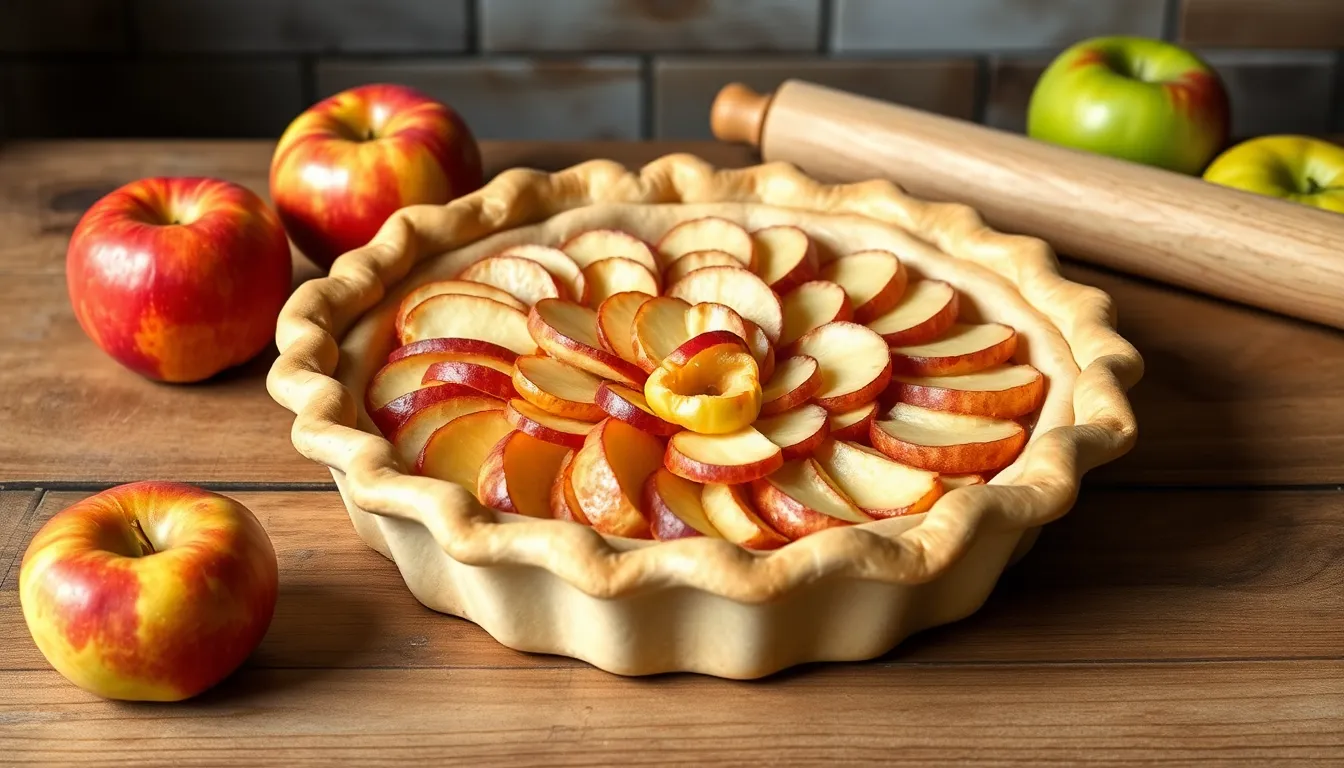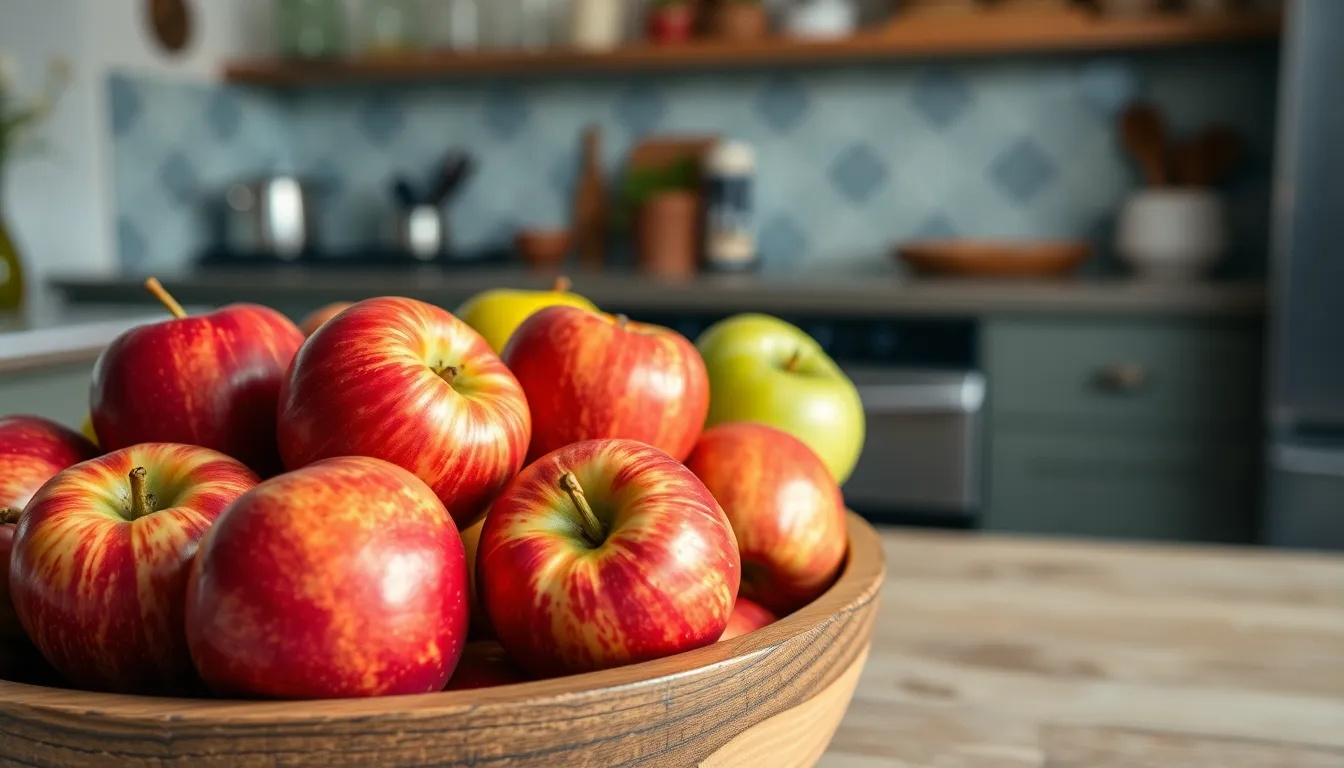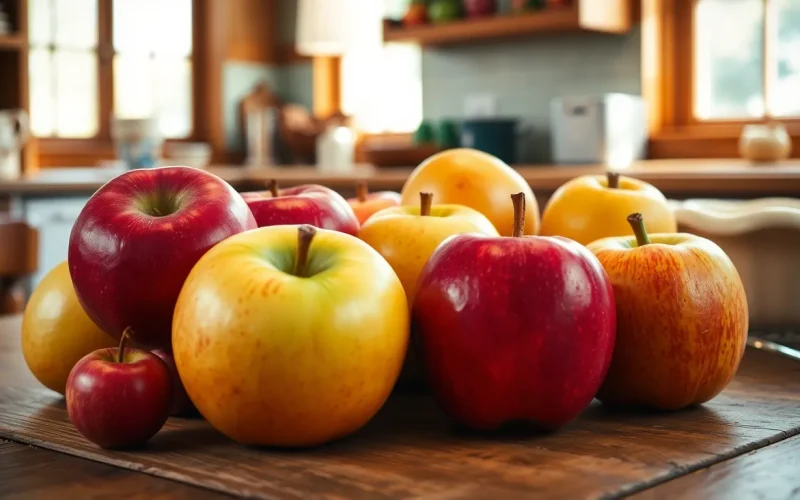Table of Contents
ToggleWhen it comes to baking the perfect apple pie, the question on everyone’s mind is: how many apples does it take to create that slice of heaven? It’s a mystery that has puzzled pie enthusiasts for generations. Too few apples, and you’re left with a sad, empty crust; too many, and you’ve got a filling that could double as a fruit salad.
Understanding Apple Pie Requirements
Baking an exceptional apple pie hinges on the right apple selection and quantity. Heftier yields of apples generally yield better results for flavor and texture.
Importance of Choosing the Right Apples
Selecting the appropriate apple varieties enhances the pie’s taste. Tart apples like Granny Smith complement sweetness. Varieties such as Honeycrisp add crunch, while McIntosh contributes a softer texture. Mixing varieties often leads to a complex flavor profile. Aim for a balance between sweet and tart apples.
Factors Affecting Apple Quantity
Several elements influence the amount of apples needed. The pie size dictates how many apples to use. A typical 9-inch pie requires approximately 6 to 8 medium apples. The apple variety impacts the yield; firmer apples hold their shape during baking while softer types break down. Ripeness also plays a role; overripe apples may release excess liquid, requiring fewer apples. Finally, personal taste preferences can dictate whether a baker prefers a fruitier or denser filling.
Calculating the Number of Apples


Determining the right number of apples for an apple pie depends on several factors, including pie size and apple variety.
Average Amount of Apples Per Pie
Typically, a 9-inch apple pie requires 6 to 8 medium apples. This quantity ensures adequate filling without overwhelming the crust. The apple’s size impacts the number needed; larger apples may reduce the count while maintaining the desired texture and flavor. Opting for a mix of sweet and tart varieties can enhance the overall taste, making the pie more enjoyable. Bakers often adjust the amount based on personal preferences, balancing tartness and sweetness to achieve the right flavor profile.
Different Pie Sizes and Their Apple Needs
For different pie sizes, apple quantities vary significantly. A 9-inch pie generally needs 6 to 8 apples, while a smaller 7-inch pie usually requires 4 to 5 apples. Conversely, a larger 10-inch pie typically calls for 8 to 10 apples. Bakers must also consider that variations in apple size may affect these numbers. Adjusting the types of apples used can be beneficial; for instance, using tart apples may allow for fewer apples while maintaining flavor depth. Understanding these variables helps create the perfect apple pie tailored to size preferences.
Popular Apple Varieties for Pie
Choosing the right apple variety is essential for a delicious apple pie. Many bakers prefer a mix to enhance flavor and texture.
Sweet vs. Tart Apples
Sweet apples like Fuji and Honeycrisp lend natural sweetness. Tart varieties such as Granny Smith provide a pleasing contrast that balances overall flavor. Mixing these types helps achieve a depth that satisfies diverse palates. Recipes often call for a blend of both, which elevates the pie’s taste profile. Tart apples help maintain structure during baking while sweet apples create a rich filling.
Best Apple Combinations for Flavor
Combining apples often yields the best results. A popular mix involves Granny Smith for tartness paired with Honeycrisp for sweetness. Other effective combinations include McIntosh and Cortland, which bring both flavor and complementary textures. Using three or four varieties can create a richer pie, enhancing complexity. Experimenting with different ratios allows bakers to customize their creations. Each blend brings distinct qualities, ensuring a balanced bite in every slice.
Tips for Preparing Apples for Pie
Preparing apples effectively plays a crucial role in achieving a perfect pie. Selecting the right methods contributes to flavor, texture, and consistency.
Peeling and Slicing Techniques
Start by choosing a sharp peeler; it makes removing the skin quick and easy. Cut apples into even slices for uniform cooking; aim for about 1/4-inch thickness. Avoid browning by applying lemon juice immediately after peeling, as it preserves color and enhances overall appearance. Every slice should be consistent to ensure even baking throughout the pie. For an appealing look, consider using a mix of thin and slightly thicker slices. This technique introduces various textures in each bite, creating a delightful combination of softness and firmness.
Flavor Enhancements and Spice Pairing
Enhancing apple flavor through spices elevates the pie’s overall taste. Sprinkle cinnamon over the apple filling for warmth and aroma. Combine nutmeg with sugar to add a subtle depth that balances sweetness. Cloves impart a unique warmth; use them sparingly to avoid overwhelming the apple flavor. Vanilla extract can be incorporated as well; it complements apple’s natural sweetness. Consider using brown sugar in addition to white sugar for added richness. Experimenting with these flavor enhancements allows bakers to create a truly customized taste experience.





